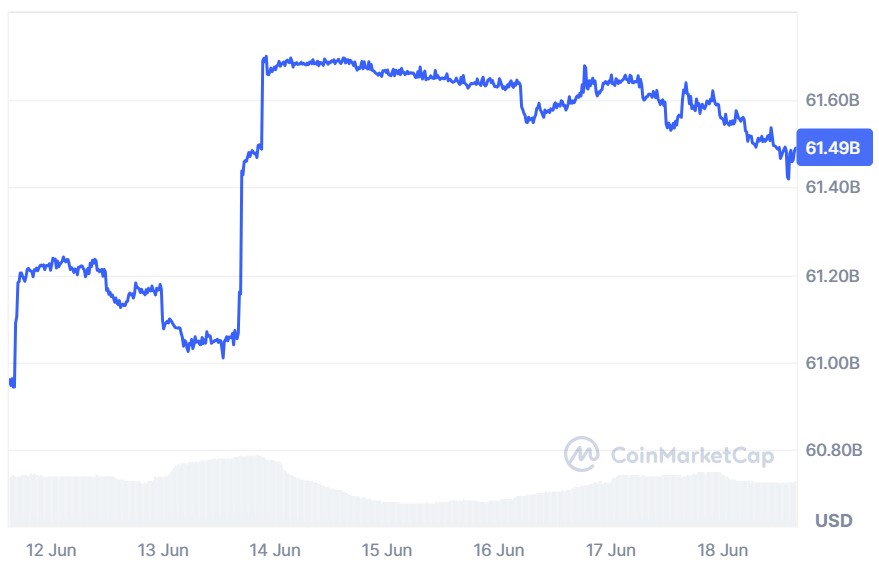The Bank of Korea’s Cautious Stance on Won Stablecoin Development
As the world of cryptocurrency continues to evolve at a rapid pace, the Bank of Korea (BOK), South Korea’s central financial authority, remains hesitant about the introduction of a won-backed stablecoin. This ambivalence persists even after recent discussions with Circle, the issuer of USD Coin (USDC), aimed at exploring stablecoin potential within the South Korean market.
Recent reports from South Korean media outlet Newsway indicate that Circle executives have engaged in private consultations with BOK officials and National Assembly lawmakers, exchanging insights on the dynamic stablecoin landscape. However, the specifics of these discussions remain undisclosed, leaving many questions unanswered about the central bank’s position moving forward.

Understanding Stablecoin Skepticism
Despite the interest from global firms and active debates among policymakers, the BOK Governor, Lee Chang-yong, expressed wariness regarding proposals for a won stablecoin. He acknowledges the potential benefits of such a digital currency, yet warns it could inadvertently bolster demand for USD-pegged stablecoins, complicating foreign exchange management within South Korea.
Furthermore, the BOK is not alone in its cautious approach. The Financial Services Commission (FSC), the nation’s leading financial regulator, is also slated to meet with Circle executives to further dissect stablecoin strategies and their implications in the cryptocurrency ecosystem.
Why This Matters: The Broader Implications for South Korea
As South Korea’s new government ventures into shaping its financial policies—following the election on June 3—interest in stablecoin regulation is reaching a fever pitch. President Lee Jae-myung has publically committed to introducing a KRW-pegged stablecoin to facilitate business transactions and enhance international trade relations. This potential shift has attracted the attention of multinational players keen on gaining footholds in the rapidly evolving South Korean market.
In parallel, legislative movements are underway, including a revised version of the Basic Digital Asset Act put forth by Democratic Party lawmaker Min Byung-deok. This new proposal aims to outline guidelines for stablecoin integration, marking a significant step towards clarifying the regulatory framework for digital assets in South Korea.
Expert Opinions: A Diverse Spectrum of Perspectives
According to a source within the domestic cryptocurrency sector, major global firms are closely monitoring South Korea’s evolving landscape. The source noted that Circle’s engagements with local regulators signal a proactive approach to potentially entering the market. However, the consensus remains that the actual issuance of a won stablecoin is still a distant reality, with discussions at this stage largely focused on exchanging views.
Governor Lee has thoughtfully articulated his viewpoint, stating: “I think won-pegged stablecoins are necessary, and I am not against their issuance.” Yet, he emphasizes the complexities they introduce, particularly concerning the potential repercussions on banks’ profitability and foreign exchange strategies.
Current Market Dynamics: USDT Trading Soars
Against this backdrop of regulatory discourse, trading volumes for Tether (USDT) on South Korean exchanges have witnessed an impressive surge. As of June 18, USDT’s 24-hour trading volume reached an astounding $96,609,745, comprising nearly 14% of all trades on the platform—a notable indicator of growing demand for USD-backed digital currencies among local investors.
This volume nearly doubles that of Bitcoin (BTC), which totaled around $49,556,659, showcasing the stark interest in stablecoins and related projects like StormX and fanC, indicative of the ongoing evolution within South Korea’s vibrant crypto market.
The Future Outlook: Navigating Unknown Waters
As the debate surrounding the won stablecoin continues to unfold, stakeholders in the region must remain adaptable and vigilant. The inter-ministerial consultations that Governor Lee anticipates will be pivotal in determining the path forward. An agreement between the Ministry of Strategy and Finance, the Financial Services Commission, and other relevant bodies is likely to shape South Korea’s digital currency landscape significantly.
This pivotal moment is about more than just the emergence of a stablecoin; it represents a broader shift in how traditional finance views and integrates with innovative digital currencies. Will South Korea’s cautious approach yield the clarity and framework necessary for a thriving stablecoin ecosystem? The coming months may hold the answers.
Conclusion: Engaging in the Conversation
The landscape of stablecoins in South Korea is a compelling narrative of innovation clashing with traditional regulatory frameworks. As discussions evolve, it’s clear that both the potential benefits and challenges must be navigated with care. What are your thoughts on South Korea’s approach to stablecoins? Join the conversation and share your insights!

